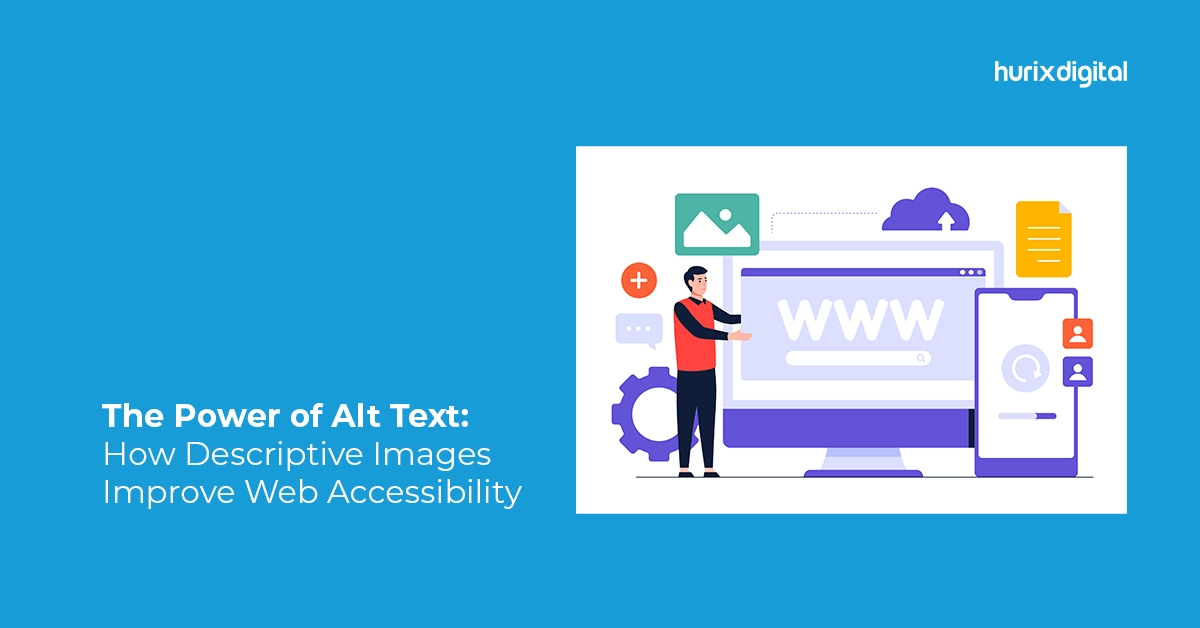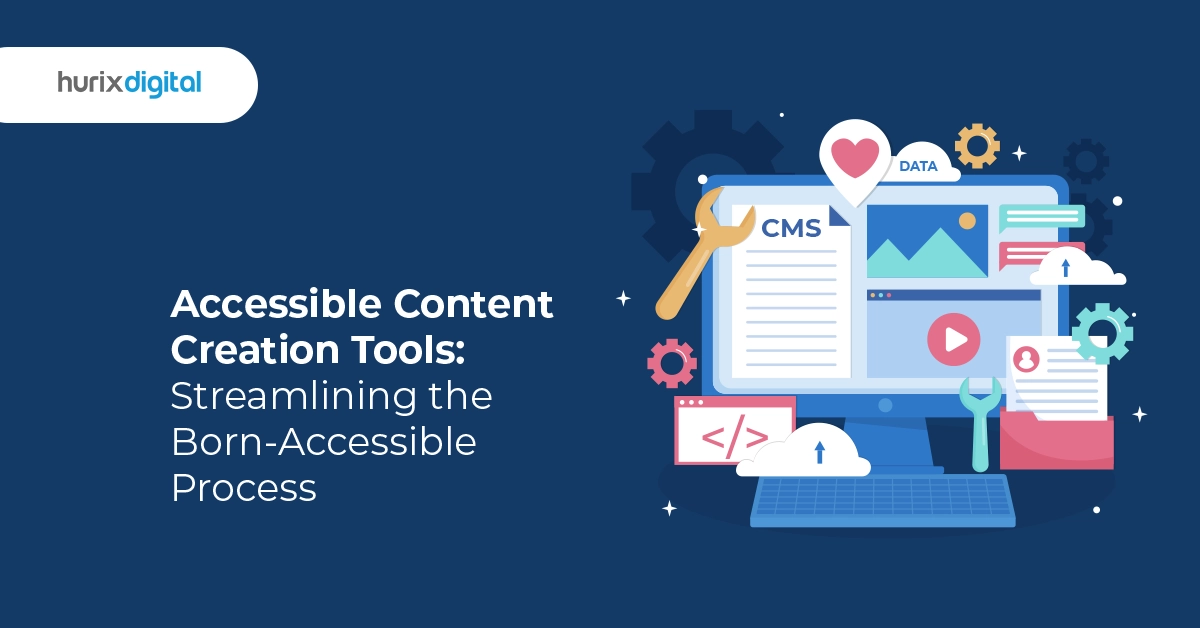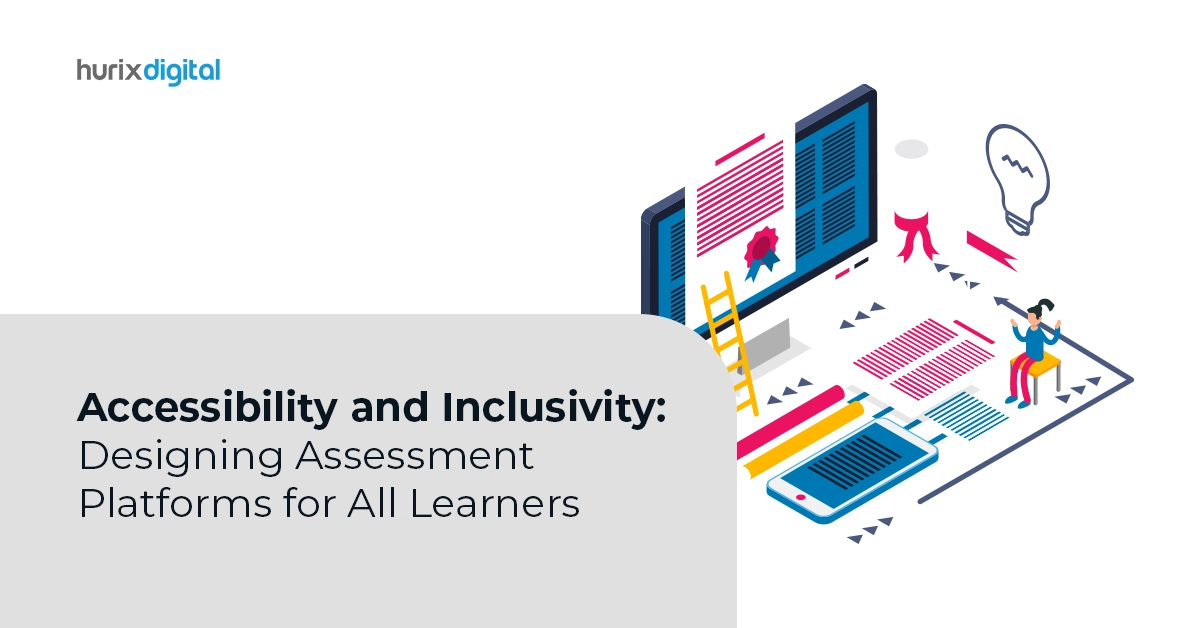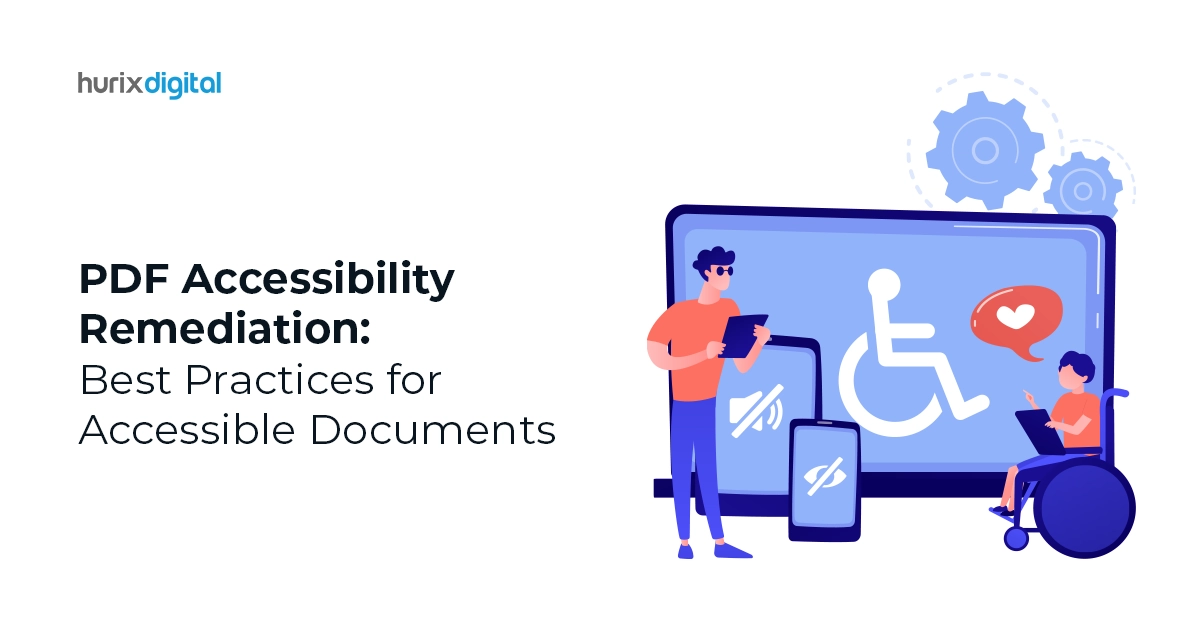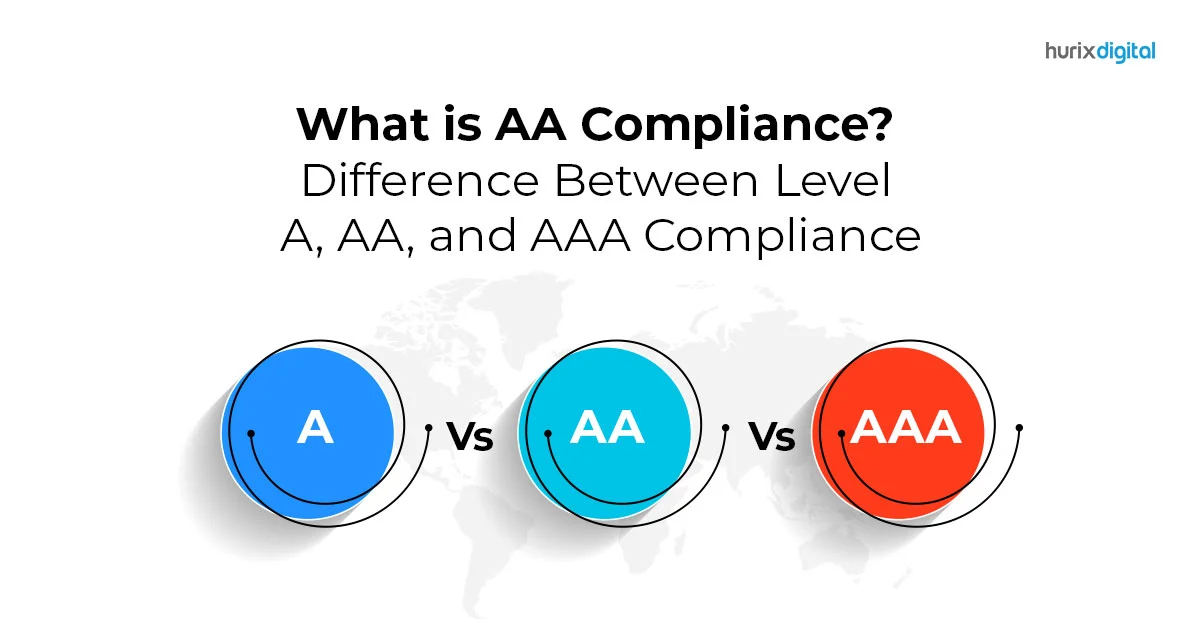
What is AA Compliance? Difference Between Level A, AA, and AAA Compliance
Summary
This Web accessibility compliance article is crucial for businesses to ensure their websites meet the AA guidelines, which represent the standard compliance level. Adhering to these standards is beneficial both legally and for business success.
In today’s digital age, web accessibility compliance is the need of the hour.
With 1.3 billion people living with a disability globally, having accessible websites and apps is a good step towards fostering inclusivity. Web accessibility ensures that everyone can access and navigate websites and apps whenever they want, without needing any assistance from anyone.
Keeping this in mind, if you want your company’s websites and apps to be accessible to all, you need to adhere to web accessibility guidelines. More specifically, you need to ensure that your website meets the standard of AA compliance. The most acceptable level of compliance for every business and institution.
Table of Contents:
- What is AA Compliance?
- What are the Difference Between Level A, AA, and AAA Compliance
- What are the Benefits of AA Compliance?
- Conclusion
What is AA Compliance?
AA Compliance is the middle level of compliance given in the Web Content Accessibility Guidelines (WCAG). Adhering to this level and its guidelines ensures that everyone, including people with visual, auditory, cognitive, motor, and other disabilities, enjoys an accessible online experience.
Besides the AA level of compliance, two more levels of compliance are present in the Web Content Accessibility Guidelines. Let’s understand what they are along with the difference between them.
Also Read: The Difference Between WCAG A and WCAG AA Conformance
What are the Difference Between Level A, AA, and AAA Compliance
Of the three levels of compliance, level A is the basic one, level AA is more comprehensive and standard, and level AAA is the most extensive and optimal level.
To understand these levels better, let’s explore each in detail.
1. Level A Compliance
Level A compliance is the fundamental level of compliance needed to be fulfilled by every website. It foolproofs companies against the primary mistakes they could make and thus render their websites inaccessible to people with disabilities.
To meet the standard of level A compliance, some of the guidelines that companies need to follow include:
- Pairing non-text content like images, charts, and other graphics with alt-text
- Providing subtitles or descriptive transcripts for video-only media
- Arranging the headings and subheadings appropriately
- Ensuring that content is easy to navigate with only a keyboard
- Using simple language to ensure that content is easy to read and understand
- Including instructions and labels in form fields
- Placing all the content in a meaningful order
- Ensuring that information is not conveyed only through size, shape, color, and other sensory elements
- Highlighting with text whenever a color is used for the background or words
- Ensuring that screen readers can access the content.
Also Read: All You Need to Know to Ensure Web Accessibility
2. Level AA Compliance
Level AA compliance goes a step further than level A and sets a higher standard of accessibility that is compatible with the majority of desktop and mobile assistive technologies.
This level of compliance removes the accessibility barriers that existed with level A, making your website more accessible to people with disabilities. At the same time, it allows you to select/display a flexible website design that looks aesthetically appealing and engaging.
To meet the standard of level AA compliance, some of the guidelines in addition to level A that companies need to follow include:
- Using a good color contrast ratio (4:5:1) so that content is differentiable from its background
- Providing the possibility of presenting the content in different ways without losing structure or information
- Ensuring that content is easy to navigate with assistive technology
- Adding captions and sign language to pre-recoded videos and audio
- Ensuring that the website contains a sitemap, table of contents, and other related elements
- Using unique headings and labels for every page
- Ensuring that web pages are available in both vertical and horizontal formats in a consistent order
3. Level AAA Compliance
Though the highest and the most comprehensive level of web accessibility, level AAA is a very restrictive level of compliance. It affects your site’s design, functionality, and interactivity.
Not only this, this level can also be financially and technically challenging to attain. As a result, even the World Wide Web Consortium, producer of WCAG 2.0 and 2.1, recommends this level of compliance not be required as a general policy as some content may not be able to satisfy the success criteria of AAA compliance.
If you still want to strive to meet the standard of level AAA compliance, some of the guidelines in addition to level A and AA that your company needs to follow include:
- Using a good color contrast ratio of 7:1 distinguish content from its background
- Accurate descriptions and sign language interpretation for multi-media content
- Ensuring availability of text resizer and color switcher for every web page
- Attaching a thesaurus to the website so that it can provide the meaning of technical terms and idioms
- Presenting the content in a specific manner depending on the section headings
- Ensuring that using web pages is not bound by a time limit
What are the Benefits of AA Compliance?
By now, you are familiar with the three compliance levels and corresponding web accessibility standards. Let’s delve into the benefits you can have upon adhering to the AA level of compliance.
1. Legal Benefits
AA compliance keeps you away from potential lawsuits by ensuring that you are compliant with laws, such as:
- ADA: Under the Americans with Disabilities Act, discrimination is prohibited against people with disabilities, thus making digital accessibility a necessity.
- Section 508: A federal law that makes it mandatory for federal agencies and associated companies in the US to make electronic content accessible for all, especially people with disabilities.
2. Business Benefits
AA compliance benefits your business and maximizes your ROI by doing the following:
- Widening your customer base to include the 16% of the population living with a disability in the world.
- Enhancing the user experience by making your website more accessible, thus improving conversion rates.
- Fostering inclusivity which creates a positive perception of your brand and thus improves customer loyalty.
Also Read: The Importance of ADA Compliance for Website Owners
Conclusion
Web accessibility is paramount for the success of every business today.
So, if your business’s websites and apps are not accessibility compliant yet, it’s high time to invest in becoming level AA compliant. And if you want to save time and money doing so, outsourcing services to meet web accessibility requirements from companies like Hurix can help.
Hurix provides custom digital accessibility solutions to meet your business’s accessibility needs. Equipped with IAAP-certified professionals and top-notch software tools, Hurix makes your legacy content and multi-media content accessible. Hurix Digital also conducts accessibility audits to ensure that your websites and apps meet the standard of AA, ADA, and Section 508 compliance.
To know more about web accessibility solutions, Get in touch with Hurix.

Vice President – Digital Content Transformation. He is PMP, CSM, and CPACC certified and has 20+ years of experience in Project Management, Delivery Management, and managing the Offshore Development Centre (ODC).
